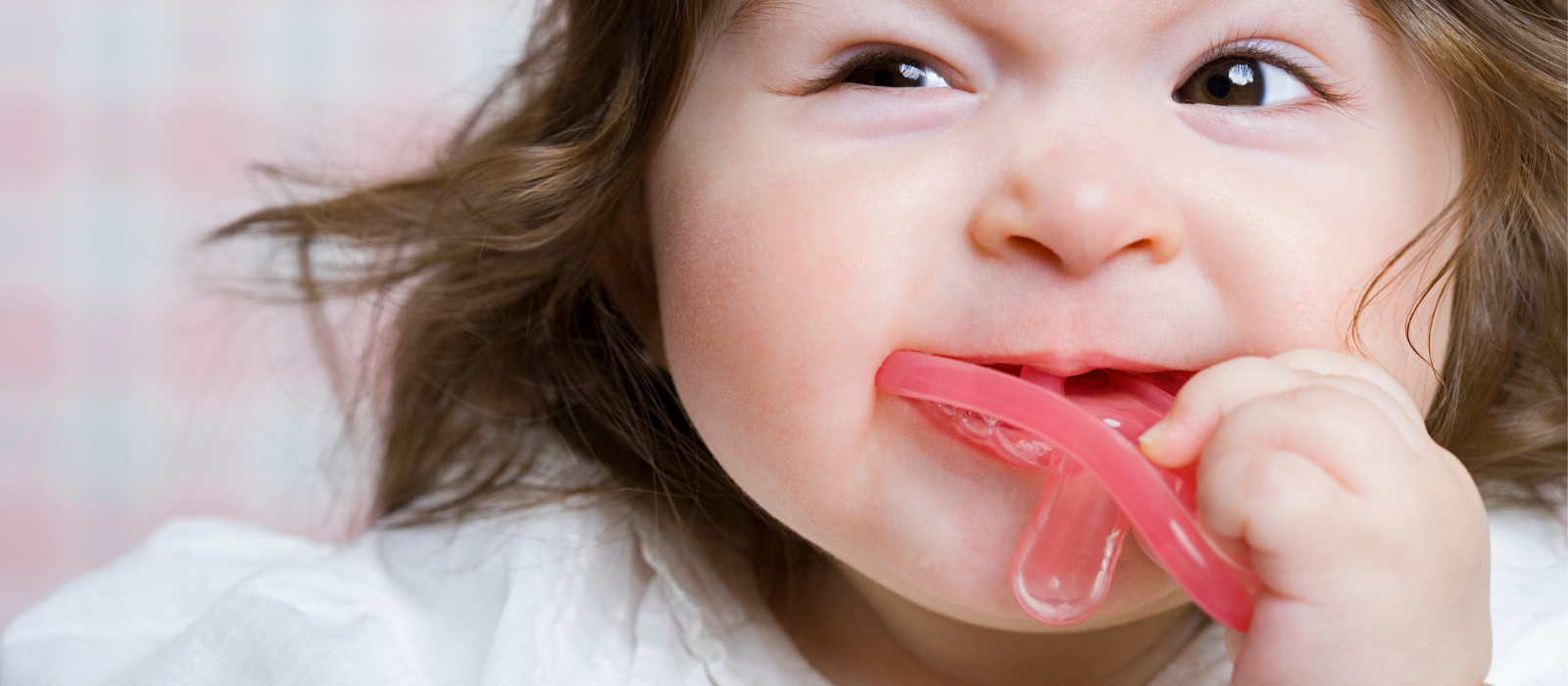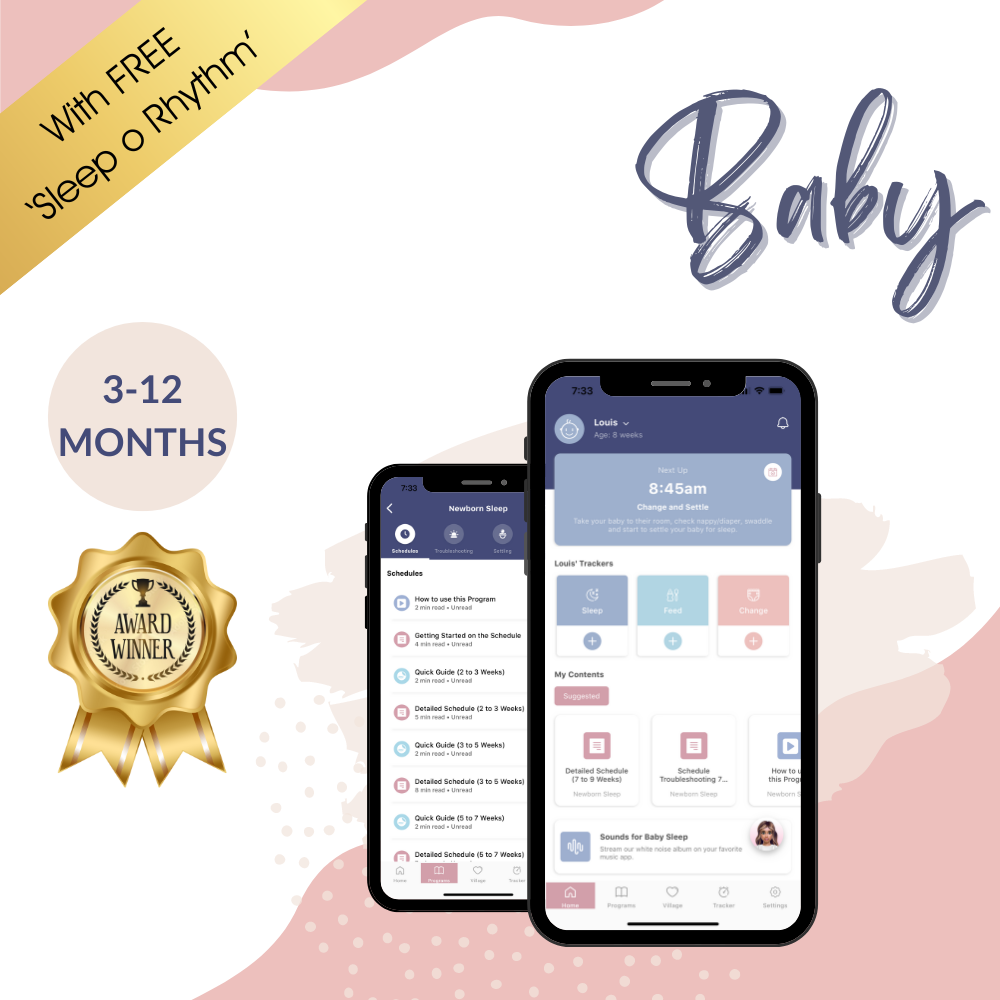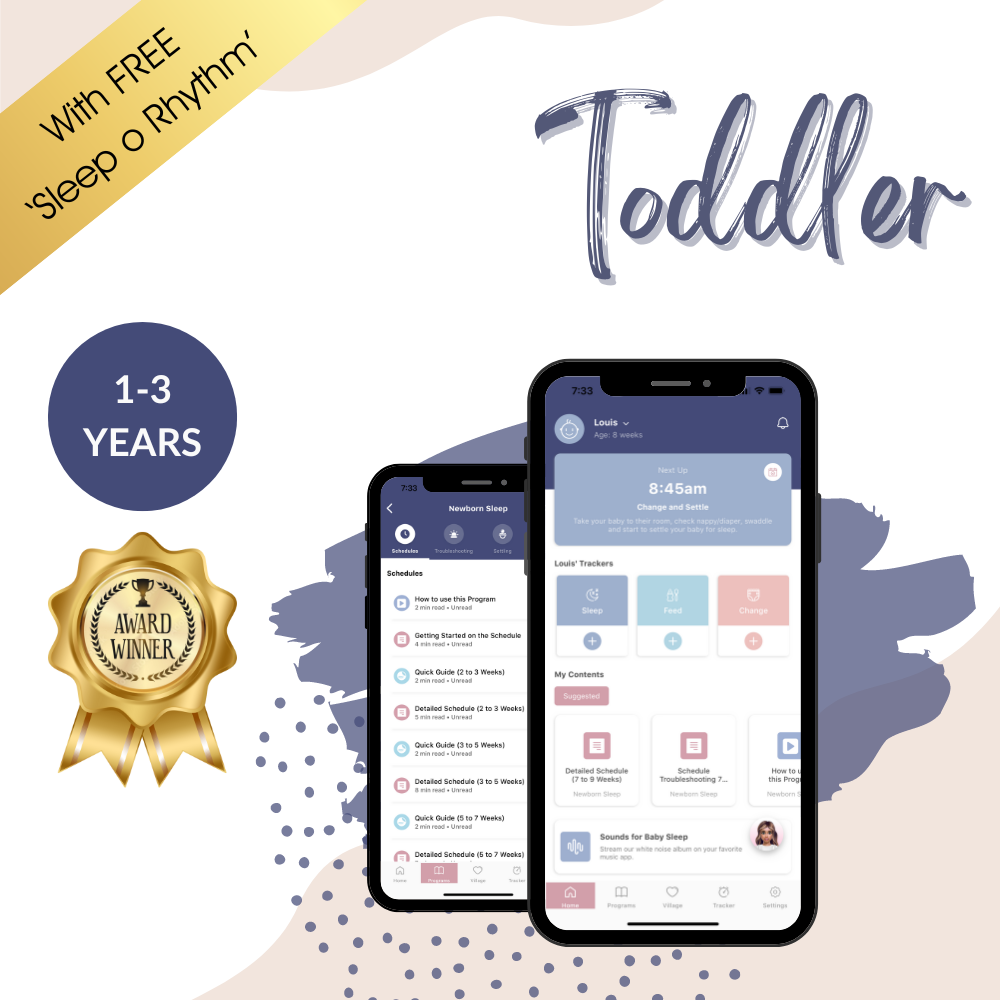
When and how to remove the pacifier
If you’ve reached the point where the pacifier is becoming a problem and affecting your little one's sleep then it may be time to consider ditching it altogether. But when is the best time to do this and how can you wean your baby or toddler off the pacifier without tears?
In this article:
- When should you get rid of the pacifier?
- How do you remove the pacifier?
- Pacifier weaning methods for babies
- Pacifier weaning methods for toddlers
- Can we still use the pacifier from time to time?
- Should I be concerned about dental issues?
Stuck with a sleep association? Head towards better sleep!
Found yourself struggling with a sleep association and don't know how to move your baby away from it? Whatever your sleep challenge is, we have a range of gentle settling methods to choose from, along with sleep experts who are available to guide you at every step.
Get our Sleep Programs
When should you get rid of the pacifier?
Pacifiers (also known as dummies or binkies) can be a great tool for settling and sleep but if your little one has become very reliant on their pacifier and, in particular, relies on YOU to replace the pacifier for them, this can start to negatively impact their sleep.
Some signs you might see are:
- Waking between sleep cycles and you’re having to replace the pacifier
- Unable to settle to sleep without it
- Early morning waking
- Waking in the night when the pacifier falls out their mouth
If your little one has been showing some of these signs for over a week, with no improvement, then it may be time to wean them off the dummy OR, alternatively, teach them to replace the dummy on their own.
Remove the pacifier or keep the pacifier?
If your baby is under 6 months old, this is the perfect time to remove the pacifier since it won't be too ingrained as a sleep association just yet. At this age, it should take around a week to wean your baby off their dummy.
If your baby is over 6 months old though, we would actually recommend you keep the pacifier and focus on teaching them to replace it themselves. This is because sleep habits are much more ingrained after 6 months and any attempt to remove the pacifier will be met with a LOT of protest! That’s not to say that it can’t be done, it’s just going to be a bit trickier and will likely take longer too.
Once your baby is able to replace their own pacifier, you should find their sleep issues resolve because they will no longer be relying on you to replace the pacifier for them. If it falls out or if they wake between sleep cycles, they can simply pop their dummy back in and go back to sleep.
If you choose to keep the pacifier once your baby is over 6 months, the next best time to remove it will be when they are around 2.5-3 years old. At this age they will only be having a short nap during the day, or may even have dropped it altogether, and will have other familiar sleep associations and routines in place to help during the weaning process.
Choosing the right time...
When weaning your baby from the pacifier, try to do this at a time when there aren't any big milestones or changes going on for your little one such as:
These can make your wee one out of sorts, so the last thing they need is to navigate dummy removal at the same time!
Say goodbye to sleepless nights.
Join over 800,000 families worldwide who are enjoying excellent sleep with our Sleep Programs, created by experts in the field of pediatric sleep.
Get our Sleep Programs
Similarly if you have a toddler, try to avoid removing the pacifier at the same time as:
- Starting daycare
- Moving house
- Moving from the crib to a toddler bed
- The arrival of a new sibling
During these big life events, your little one's pacifier will provide comfort and familiarity.
How do you get rid of the pacifier?
Firstly, you'll want to make sure your baby or toddler is following the age-appropriate sleep and feed schedules in our Little Ones App. This guarantees they will be ready for their naps at the perfect times and will have a nice, full belly. A little one who is over or under tired, or hungry, will NOT be easy to wean off the pacifier - no matter what you do!
Next, ensure you’ve got other positive sleep associations in place to replace the dummy, such as a swaddle (or baby sleeping bag), white noise and a dark room. For older babies, you may also want to introduce an age-appropriate cuddly or comforter to provide some extra reassurance once their binky is gone.
Pacifier weaning methods for babies
For babies under 6 months, we recommend using one of two methods, depending on how quickly you want the pacifier gone and the level of protesting you’re comfortable with. Both methods are explained in much more detail in our Little Ones App:
Cold Turkey
This method works by taking away the pacifier completely. During this process, you might need to help your baby settle for their naps - no doubt they will be upset while they get used to not having a pacifier.
But don't worry, at every nap they will take less and less time to settle. It will take about 3 days to break the habit (sometimes sooner!) if you’re consistent in your approach. Our Little Ones App offers further tips on how to do this.
Gradual Method
Here, you replace the pacifier with another settling tool/sleep association such as patting to sleep. When you lose the pacifier, you continue patting to sleep for a few days, then gradually wean off the patting as well. This 3-step process does take a bit longer but is great for babies who don't respond well to sudden changes or who are very reliant on their pacifier for sleep.
For more information about how to gradually reduce other sleep associations (like rocking or feeding to sleep), check out our Little Ones App. We have several age-appropriate methods to guide you through this process.
Pacifier weaning methods for toddlers
Gradual Destruction
If you have a younger toddler, this method is a good option. You gradually, and safely, cut off pieces of the pacifier, which destroys to vacuum effect and means it is no longer satisfying for your toddler to suck. Most toddlers will then be happy to say bye bye to their binky.
Start by piercing a hole in the pacifier (sometimes this is all that's needed!) and then every few days, cut the tip a little more until your toddler isn’t able to suck on it anymore and chooses to get rid of it.
Let's get your little one's sleep sorted ASAP!Our award-winning Sleep Programs will solve your baby's sleep challenges in no time.
Get our Sleep Programs
Ensure you check carefully for loose pieces of rubber/latex, as these can be a choking hazard.
Dummy/Paci Fairy
This method works best for older toddlers, from around 2.5 years of age. The dummy/pacifier fairy is a close friend of the tooth fairy and works in a similar way. They take your toddler’s pacifiers away to give to little babies that need them and in exchange, leave a present as a thank you for being such a generous "big kid".
You’ll find a downloadable letter from the Dummy/Pacifier Fairy that you can give alongside their present in our Little Ones App.
Once the fairy has taken away your toddler's dummy, it can be a tricky few days or even weeks, because your toddler needs to learn a whole new way of going to sleep. Give them respect, understanding and time to adapt.
Can we still use the pacifier from time to time?
This depends on your baby or toddler's temperament and how reliant that were on the pacifier in the first place. In most cases, once the pacifier has gone, you can still use it during the day to soothe your baby or toddler, as long as you've removed any association with sleep.
When your baby or toddler is sick, or just having one of THOSE days, popping their dummy in can give everyone a bit of a break! But if you find that your little one wants the pacifier more and more during their awake time, or they are starting to ask for the pacifier at sleep times too, it might be best to remove the temptation altogether.
Should I be concerned about dental issues?
For parents who are considering keeping the pacifier long-term, one of the biggest concerns is usually the impact that this might have on their toddler's teeth. The good news is, research shows that if used correctly, dummies don’t have a long term effect on your little one's teeth. In fact, today’s pacifiers are shaped to ensure that teeth are still able to develop correctly.
However, there are still things you can do to protect your toddler's teeth and speech:
- Ensure pacifiers are clean and sterilised
- Check them regularly for tears or sign of wear
- Buy pacifiers that are the right size for you baby, as their mouth grows their pacifier needs to be bigger
- Keep the pacifier for sleep time as much as possible
- If your baby or toddler is trying to communicate with you, be it babbling or words, then take the pacifier out as this helps their speech development
For more detailed information about weaning your baby or toddler off their pacifier, check out our Little Ones App, which will take you through the process step-by-step. Our certified sleep consultants are also available day and night to support you every step of the way.
Bibliography
Caruso, S., Nota, A., Darvizeh, A., Severino, M., Gatto, R., & Tecco, S. (2019). Poor oral habits and malocclusions after usage of orthodontic pacifiers: an observational study on 3–5 years old children. BMC Pediatrics, 19(1). https://doi.org/10.1186/s12887-019-1668-3
Majorana, A., Bardellini, E., Amadori, F., Conti, G., & Polimeni, A. (2015). Timetable for oral prevention in childhood—developing dentition and oral habits: a current opinion. Progress in Orthodontics, 16(1). https://doi.org/10.1186/s40510-015-0107-8





